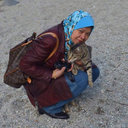Skin cancer chemopreventive effects of a flavonoid antioxidant silymarin are mediated via impairment of receptor tyrosine kinase signaling and perturbation in cell cycle progression.
Кључне речи
Апстрактан
Enhanced tyrosine kinase activity due to aberrant or overexpression of receptor and/or non-receptor tyrosine kinases has been implicated in a variety of human malignancies including cutaneous neoplasms. Epidermal growth factor receptor (EGFR)-mediated tyrosine phosphorylation may be a primary indicator of signal transduction regulating cell growth and proliferation. Recent studies have shown that skin tumor promoters such as phorbol ester and ultraviolet B radiation activate EGFR in mouse skin as well as in cell culture. Similarly, oxidative stress, which is implicated in skin tumor promotion, also activates EGFR-mediated cell signaling. Since this signaling pathway has been suggested to be involved in skin tumor promotion, its impairment by antioxidants may lead to an efficient way for skin cancer prevention and therapy. Recently, we showed that silymarin, a flavonoid antioxidant, affords exceptionally high to complete protection against several skin tumor promoters caused tumor promotion in mouse skin. Employing human epidermoid carcinoma cells A431 that contain overexpressed EGFR, in this study, we assessed whether the anti-skin tumor promoting effects of silymarin are due to its inhibitory effect on EGFR activation and down stream signaling pathway leading to perturbations in cell cycle progression. Treatment of cells with silymarin resulted in a significant inhibition of ligand-induced activation of EGFR with no change in its protein levels. Silymarin treatment also resulted in a significant decrease in tyrosine phosphorylation of Shc, an immediate downstream target of EGFR, but no change in the protein levels of Shc. The inhibition of EGFR activation by silymarin was associated with a highly significant to complete inhibition of EGFR intrinsic kinase activity. Cells treated with silymarin also showed a significant G2-M arrest in cell cycle progression, and a highly significant inhibition of DNA synthesis and cell growth in a dose-dependent manner. Taken together, these results suggest that skin cancer chemopreventive effects of silymarin are mediated via impairment of EGFR signaling which ultimately leads to perturbation in cell cycle progression resulting in the inhibition of proliferation and induction of growth arrest.


